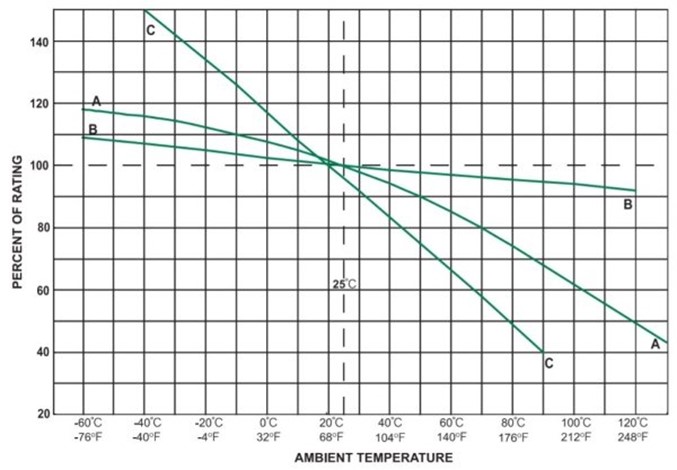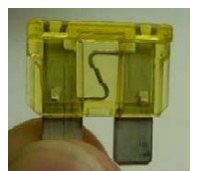|
|
||
|
||
|
Privacy Policy | Editorial Policy | Profit Policy | Join the Association | List of Members | Contact us | Index | Links |
||
|
Back Go to page: 1 2 3 4 5 6 7 8 9 10 11 12 13 14 15 16 17 18 19 20 Forward |
||
|
|
||
|
Contents:
Conversion to the Canberra video.
|
||
|
The people I meet.
The other day I woke up feeling refreshed and as fit as a fiddle and as it was close to Christmas and looked like being warm and dry, as is the norm in Queensland, I knew it was going to be a good day. As usual, I bounded out of bed at 3.30am, and as I was in a bit of a hurry to hit the shops present buying, I popped onto the floor and did a rapid 100 push-ups, not my normal 250, it was then into the Dunlop Volleys and out for a brisk 25 km run around the block, leaving the dog at home as I knew he would slow me down.
Back home again, I checked the clock and found it was just approaching 6.00am, which pleased me as my times had not slowed and I’d now been able to maintain my “around the block” rate for some years.
After a hearty breakfast of 17 raisins, a lettuce leaf smeared with crunchy peanut butter, a carrot and a 1 litre glass of lukewarm tap water, I hit the shower and prepared the body for mingling with the populous. Having been blessed with Radtechitis since my 18 month stay at the Air Force’s bay-side resort at Laverton back in the 1960s, I knew I had to be very careful and hide the Radtechitis as it normally sent our fairer sex into a frenzy. For many years until I discovered the reason why, I couldn’t walk amongst the public without the fairer sex being uncontrollably attracted to one’s self. At times this could be quite embarrassing as every-time I hit the current Westfield, I’d have at least 60 or more females breathing heavy and pawing at my body. Similarly, when I hit the beach at the Goldie, about a hundred shapely bikini-clad lassies would try and invade my towel area.
Some years ago, when I was on the beach at Surfers, I discovered I’d left my coconut oil at home and was in danger of getting seriously burnt. Not wanting to end up like a lobster, I fronted up to John Patterson, the Mutton Bird Man and had a head to toe spray of his “patented” anti-burn mutton-bird oil. Up until that moment, I had been chased by the lovelies but after the spray I found I was left alone. The Radtechitis had been masked. A cure had been found. Eureka!
From that day, I didn’t venture forth from home without first applying a liberal amount of Johnson’s baby oil to my magnificence. On this particular day, after my relaxing shower, I covered the body with the oil, dressed, walked up to the bus stop and ventured forth. After spending some hours in Queen St in the wonderful city of Brisbane, I needed some lunch and a refreshing ale, so I went to where all connoisseurs of fine foods would go, to the Jade Buddha. I ordered a small meal and a glass and while waiting for my repast, I clumsily bumped against one of the tables. I thought nothing of it, but unfortunately, that bump scraped a minute amount of Johnson’s baby oil from my body and allowed a miniscule amount of Radtechitis to escape. It wafted into the air and was immediately carried forth by the breeze from the Brisbane River.
Some miles away, in the spirit of Christmas, the lovely Van Pham was quietly going about her day, selfishly preparing meals for the hundreds of sick, the elderly and the homeless, when that tiny bit of Radtechitis descended from the heavens and was detected by her. She immediately froze, spun around on tippy toe, trying to identify from where that Radtechitis had come. Having a good sense of direction, and a good head for calculus, trigonometry and geography, she determined it must have come from the Jade Buddha, so dropping the plates of roast lamb and mint sauce she had been carrying, she grabbed one of the wheel-chairs that had been parked at the door, hopped on and in a frenzy, headed for the Jade Buddha.
|
||
|
|
||
|
Unbeknownst to me, all that had transpired some 20 miles away, but Van was so determined to obtain some of that Radtechitis that she covered that distance in just 15 mins. Leaving the wheel-chair at the door, she raced inside, found me quietly sitting at a table admiring the view and draped herself upon my person soaking up some Radtechitis. After 49 minutes, I was forced to extricate myself from her clutches.
Such is the burden a Radtech must endure.
The lovely Van was born in Vietnam but as she says, she was lucky and escaped in 1981 when she was only 19. After a 6 week harrowing trip, she arrived in Australia and now, nearly 40 years later, calls Australia and more particularly, Queensland, home.
Australia is lucky to have such lovely people.
|
||
|
You know you live in Darwin when: The best parking spot is determined by shade, not distance.
|
||
|
QR Code Scams.
With the huge resurgence of the QR code which was nearly on its way out until the pandemic rekindled its return as a convenient and scannable shortcut, scammers are starting to take note. COVID-19 had made finding a digital equivalent to things normally handed out physically, like menus, tour guides and other paperwork and many organizations have adopted the QR code to help with this. And so, it would seem, have criminals. Scammers have dusted off their book of tricks that abuse QR codes and we're starting to see new scams. Or maybe just old scams in new places.
What is a QR code again?
A Quick Response (OR) code is nothing more than a two-dimensional barcode. This type of code was designed to be read by robots that keep track of items in a factory. As a QR code takes up a lot less space than a legacy barcode, its usage soon spread. See HERE.
Smartphones can easily read QR codes, all it takes is a camera and a small piece of software . Some apps, like banking apps, have QR code-reading software incorporated to make it easier for users to make online.
Why are QR codes coming back?
For some time, these QR codes were mainly in use in industrial environments to help keep track of inventory and production. Later they gained some popularity among advertisers because it was easier for consumers to scan a code than to type a long URL. (The one above shows you the Radschool web site.) But people couldn't tell from a QR code where scanning would lead them, so they got cautious and QR codes started to disappear. Then along came the pandemic and entrepreneurs had to get creative about protecting their customers against a real life virus infection.
As an example, for fear of spreading COVID-19 (wonder what COVID-18 was like) through many people touching the same menu in a restaurant, businesses placed QR codes on their tables so customers could scan the code and open the menu in the browser on their phone. Clean and easy, unless of course, a previous visitor with bad intentions had replaced the QR code with his own. Enter QR code scams.
Some known QR code scams
The easiest QR code scam to pull off is clickjacking. Some people get paid to lure others into clicking on a certain link. What better way than to replace QR codes on a popular monument, for example, where people expect to find background information about the landmark by following the link in the QR code. Instead, the replaced QR code takes them to a sleazy site and the clickjacking operator gets paid his fee.
Another trick is the small advance payment scam . For some services, it's accepted as normal to make an advance payment before you can use that service. For example, to rent a shared scooter, you are asked to make a small payment to open its lock, rhe QR code identifies the scooter and starts the payment
How to avoid QR code scams
There are a few common sense methods to avoid the worst QR code scams:
Even if the mail from a bank looks legitimate, you should at least double-check with the bank (using a contact number you've found on a letter or their website) if they ask you to log in on a site other than their own, install software, or pay for something you haven't ordered.
As an extra precaution, do not use your banking app to scan QR codes if they fall outside of the normal pattern of a payment procedure.
What's next?
One method in development to replace QR codes on Android devices is the Near Field Communication (NFC) tag. NFC tags, like QR codes, do not require an app to read them on more modern devices. Most of the recent iPhones and Androids can read third-party NFC tags without requiring extra software, although older models may need an app to read them. (See HERE)
NFC tags are also impossible to read by humans but they do require an actual presence, i.e. they can't be sent by mail, but with the rise in popularity of contactless payments, we may see more scams focusing on this type of communication.
Stay safe, everyone!
|
||
|
You learn that a seat belt buckle makes a pretty good branding iron.
|
||
|
The coming of the Canberra.
Many years ago (1960) the Commonwealth Film Unit produced a great little video on the introduction of the Canberra. The video shows how it takes piston-engine trained crews three months to learn about the aircraft and its safety devices. The film shows men undertaking the course and concludes with a crew making its first bombing run. It’s old now of course, (60 years old!!) but you might recognise some faces.
Click the pic below
It’s still a great looking aircraft.
|
||
|
Hot water comes out of both taps.
|
||
|
A Vietnam Christmas, 1971 A US airman’s perspective
Christmas provided a mental break from the war. In an annual event, the US Cam Ranh air wing painted a Caribou with a red Santa Claus face on the forward dome and flew to various bases as a treat for the army troops. One of the flight mechanics (loadies) played Santa dressed in an appropriate red suit and fake beard and a small, half-dozen strong, squad of “Donut Dollies” or female Red Cross workers, played Santa’s helpers. They also carried a large stock of liquor and sandwiches for the troops.
Bringing the Christmas aura to the trenches of Vietnam unleashed seemingly well-secured emotions that suddenly broke loose in everyone, none more clearly displayed than at the small northern delta army base of Bao Loc, sixty miles northeast of Saigon.
This base resided as close to the pits of Vietnam as you could get. The approach plate for the runway warned: “Runway in poor condition, south end 20% coverage by large, loose rocks. 200' overrun each end, poor condition. Parking area east side and south end, poor condition, partly overgrown.”
We pulled onto the poorly conditioned parking ramp, but before we could shut down the engines and open the rear cargo door, a series of large transport trucks appeared on the road to the field filled with troops whooping and waving. They pulled up next to us on the ramp and disgorged fifty or so soldiers in their green fatigues that surrounded the rear of the plane to welcome whoever might disembark..
|
||
|
|
||
|
The rear cargo door came down, and Santa emerged. The troops cheered and whistled. Then the Donut Dollies came down the ramp and the troops went joyously berserk, but not in a nasty or lewd sense. They spun around in the same frantic ecstasy of a pet dog when you pick it up from the vet or when you hold its dinner bowl over its head to make it dance. No group of children ever carried off the fantasy so well. A young soldier shook my hand with tears in his eyes and said, “Sir, this is the best thing that has ever happened here. Thank-you so much!” Maddeningly for my composure, he was about to make me cry, too.
This brought to mind, yet again, the imperative question: “What the hell are we doing here?”
We carried a bag of letters from school kids in the States for the soldiers. They told of how proud they were of the troops, how they hoped they didn’t get hurt, and to come home soon to their families. As I watched the troops reading these simple letters, I did start choking up as they became silent with faces contorted to avoid crying.
As the sun set over the Central Highlands, we flew up the coast past Phan Thiet (Pappa Tango) toward Cam Ranh with the upper cargo door raised and the bottom ramp angled up so we could lie against it and look out the back of the plane. Two or three Dollies joined me gazing out at the South China Sea in wistful contemplation of the day, marvelling that in our mid-twenties we found ourselves in such a perplexing situation halfway around the world."
(Excerpt from "Flying the Line, an Air Force Pilot's Journey,")
|
||
|
You know that in January and February it only takes two fingers to steer a car.
|
||
|
Fuses
Everyone knows what a fuse is, but who knows how they work?
A fuse is a simple and highly effective way to protect a circuit from dangerous
levels of current:
The conductor inside the fuse is made of a metal similar to solder. It has a lower melting point than the wire itself. The size of the conductor is calibrated very carefully so that when the rated current is reached, enough heat is generated to melt the conductor and so break the circuit.
Though the fundamental operation of a fuse is not complicated, there are subtle points to keep in mind.
When a Fuse Is tripped (blown), heat does the job, not current.
A fuse is not tripped directly by current; rather, the current creates heat, and heat trips the fuse. This is actually a rather important distinction because it means that fuse operation is influenced by ambient temperature and by the temporal characteristics of the current.
The specified current rating of a fuse is relevant only to a specific ambient temperature (usually, 25°C), and consequently you need to adjust your fuse selection if you’re designing a device that will operate outdoors in, say, Antarctica or Alice Springs. The following graph shows how ambient temperature affects the actual current rating—relative to the nominal 25°C current rating—of three types of fuses.
|
||
|
|
||
|
Regarding the characteristics of the current passing through the fuse, we all know that the effect of heat accumulates over time (momentarily touching a hot pan is nothing compared to picking it up and realizing that it’s hot when you’re halfway between the stove and the dining table). Consequently, the current rating of a fuse is a simplification of its real behaviour. We can’t expect a fuse to respond to a very short duration (but high) current flow because the short duration of the high level of current won’t increase the temperature enough to cause tripping.
The following graph shows the time-current characteristics for a group of surface-mount fuses. The rated current is on top, and the curve represents the amount of time required to trip the fuse in relation to the amount of current flowing through the fuse.
|
||
|
|
||
|
As you can see, you need 3 amps to trip a 0.5-amp fuse (red dot) when the duration of the over-current condition is only 1 ms.
Connect Fuses in Series!
Although this is straightforward, it’s worth mentioning just in case you’re up late designing a schematic and in your exhausted state you don’t notice that you placed the fuse in such a way that it is, for example, in series with only one of two voltage regulators. A fuse cannot protect anything that is connected in parallel with it.
Fuse Design Best Practices: Rated Current vs. Operating Current
It would be perfectly reasonable to assume that a fuse rated for 6 amps could be used in a circuit that might need 5 amps of steady-state current. It turns out, though, that this is not good design practice. The current rating of a fuse is not a high-precision specification, and furthermore the actual tripping current is influenced by ambient temperature. Consequently, to avoid “nuisance tripping,” you should have a fairly generous gap between your expected steady-state current and your fuse’s rated current.
It is preferable to use a fuse with a rating 25% (for operation at room temperature) higher than the circuit’s steady-rate current draw, thus, a fuse with a rating of 10 amps would be used only if the circuit’s steady-state current will stay below 7.5 amps.
You Have to Be Patient
Let’s say your circuit includes a delicate component that will certainly be damaged if it is subjected to currents higher than 1 amp. The circuit should never draw more than 500 mA under normal conditions, so you include a fuse with a rating of 900 mA. This is high enough to prevent nuisance tripping and low enough to ensure that the delicate component never sees 1 amp. Right?
Well, no. Consider the following spec for the fuses mentioned earlier in the article:
|
||
|
Remember, heat takes time to accumulate—in this case, it takes a long time. You’ll have to wait at least four hours for the fuse to trip when the current is equal to the rating, ie: when you pass 1 amp through a 1 amp fuse. Even at twice the rated current, the delay is at least five seconds. The bottom line is that the delicate component might be toast long before the fuse trips.
You’ll have to rethink your fuse selection or—and this is probably a more practical solution in a situation such as the one described above—implement a different method of dealing with overcurrent conditions.
Why do Fuses have a Voltage Rating?
Fuses are designed to have very low resistance so that they don’t unduly interfere with the circuits that they are protecting. This low resistance means that the voltage drop across the fuse will be very small. Why, then, do fuses have a voltage rating?
It’s true that fuses see a small voltage (drop) during normal operation, but the voltage rating is not relevant to normal operation. Rather, the voltage rating tells you what the fuse can endure after it has tripped. A blown fuse is an open circuit and if the voltage across this open circuit is enough to cause arcing, the fuse can’t be relied upon.
|
||
|
The temperature drops below 32 degrees C and you feel chilly. |
||
|
|
||
|
|
||
|
|
||
|
|
||
|
Back Go to page: 1 2 3 4 5 6 7 8 9 10 11 12 13 14 15 16 17 18 19 20 Forward |
||








